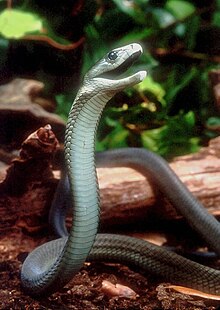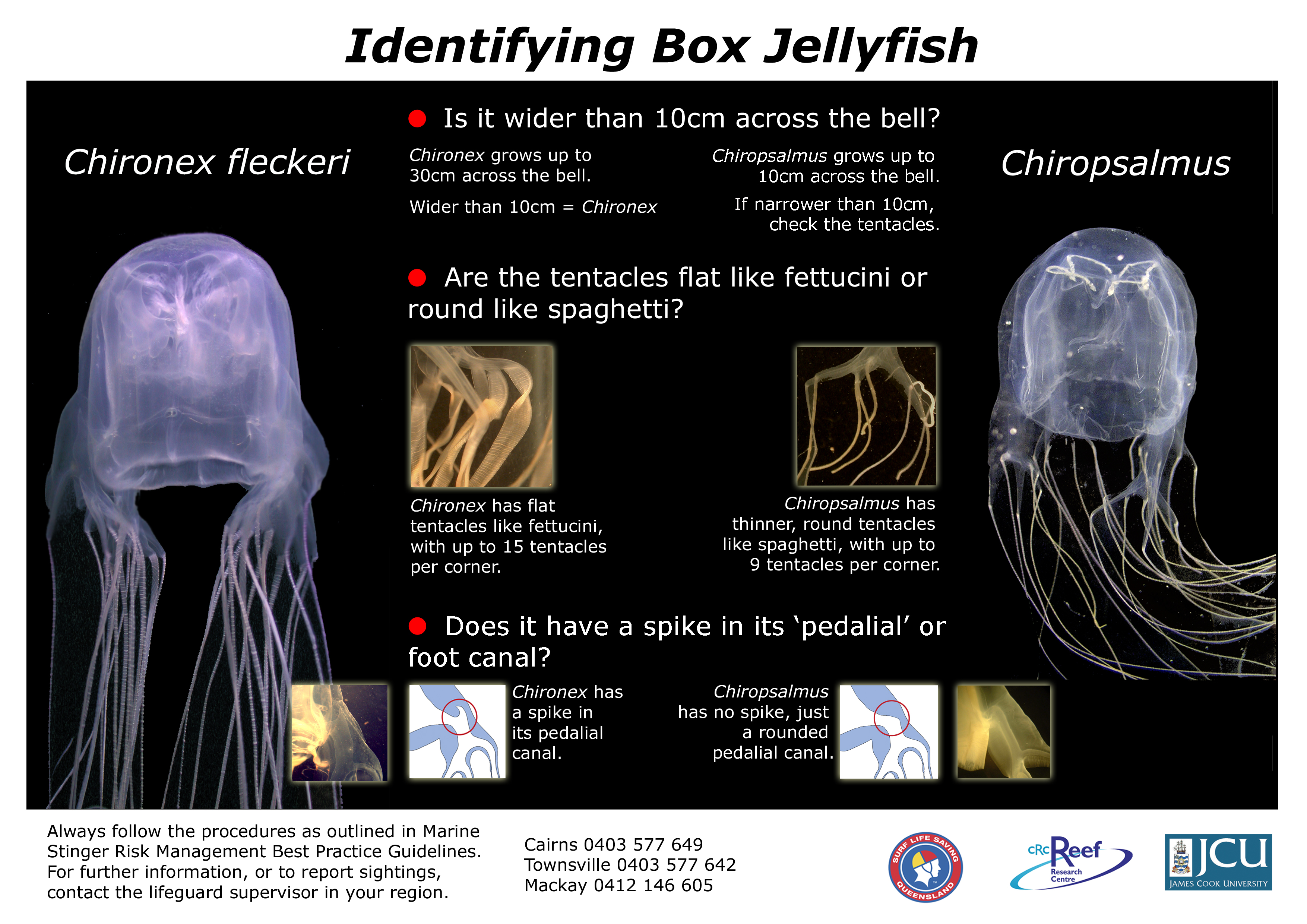DEADLIEST ANIMALS ON EARTH
MOST VENOMOUS REPTILES AND AMPHIBIANS:
MAMBA :- TOXIN - DENDROTOXIN ; FATAL AMOUNT (MG)* = 0.10
 |
A tiny dose of mamba toxin could kill a room full of people |
6.TAIPAN :- TOXIN - TAIPOXIN ; FATAL AMOUNT (MG)* = 0.11
7. INDIAN COBRA :- TOXIN - PEAK X ; FATAL AMOUNT (MG)* = 0.12
POISON ARROW FROG :- TOXIN - BATRACHOTOXIN ; FATAL AMOUNT (MG)* = 0.17
 |
The venom from these frogs are excreted through their skin |
9. INDIAN COBRA :- TOXIN - PEAK 1 X ; FATAL AMOUNT (MG)* = 0.17
 |
| The Indian Cobra's bite can be fatal within two hours, causing paralysis, respiratory failure and cardiac arrest |
The venom of these creatures is almost unbelievably powerful : 1 mg (the approximate weight of a bank note ) of Mamba Toxin 1 would be sufficient to kill 50 people. Other than reptiles, such creatures as scorpions (0.5 mg) and black widow spiders (1.0 mg) fall just outside the Top 10. Were BACTERIA included, 12 kg of the deadly BOTULNUS TOXIN A (fatal dose just 0.000002 mg) would easily kill the entire population of the world. Even deadly poisons such as STRYCHINE (35 mg) and CYANIDE (700 MG), seem relatively innocuous in comparison.
SNAKE BITE:-
Ten Thousands of people die from snake bites each year, with numbers varying greatly by geographical area. First-aid methods also vary depending on the types of snake and venom, but most guidelines advise that sucking out the venom by mouth does not work. Cutting open the bitten area is also not advised, since it can increase the risk of infection. The American Red Cross advises that the most important things to do are to keep calm, protect the victim and others from further bites, and call for medical help or get to a hospital without delay. Do not elevate the affected area or give the person anything to eat or drink, but do remove any restrictive clothing or jewelry and keep the person as still as possible.
OTHER DEADLY ORGANISMS:-
KILLER SHARKS:-
The International Shark Attack File (ISAF) monitors world wide incidents and has records dating back to the late 16th century. From 1580 to early 2011, the ISAF has recorded a worldwide total of 2,340 provoked shark attacks, 447 of which were fatal. There has been a marked increase in unprovoked attacks since the early 1990's, reflecting the increase in people engaging in scuba diving and other aquatic activities , and the increasing amount of time humans spend in the sea, rather than any observed increase in the aggressive instincts of sharks. In 2010 there were 79 unprovoked attacks and six fatalities - the highest number of attacks since 2000, and a slightly higher total of deaths from recent years (the average for the decade was 4.3 fatalities per year).
According to the ISAF, the average person's risk of death by shark attack is 1 in 3,748,067 In the USA, the annual risk of death from lighting is 30 times greater than from shark attack. Between 1959 and 2010, there were 1,970 deaths by lightning in coastal USA, compared to 26 shark-attack fatalities in the same area.
TOP SHARK-ATTACK HOTSPOTS:-
1. USA - FATAL ATTACKS - 36; LAST FATAL ATTACK - 2010; TOTAL ATTACKS - 947
2. AUSTRALIA - FATAL ATTACKS - 131; LAST FATAL ATTACK - 2010; TOTAL ATTACKS - 417
3. SOUTH AFRICA - FATAL ATTACKS - 47; LAST FATAL ATTACK - 2010; TOTAL ATTACKS - 223
4. HAWAII - FATAL ATTACKS - 8; LAST FATAL ATTACK - 2004; TOTAL ATTACKS - 102
5. BRAZIL - FATAL ATTACKS - 21; LAST FATAL ATTACK - 2006; TOTAL ATTACKS - 88
2. AUSTRALIA - FATAL ATTACKS - 131; LAST FATAL ATTACK - 2010; TOTAL ATTACKS - 417
3. SOUTH AFRICA - FATAL ATTACKS - 47; LAST FATAL ATTACK - 2010; TOTAL ATTACKS - 223
4. HAWAII - FATAL ATTACKS - 8; LAST FATAL ATTACK - 2004; TOTAL ATTACKS - 102
5. BRAZIL - FATAL ATTACKS - 21; LAST FATAL ATTACK - 2006; TOTAL ATTACKS - 88
SMALL BUT DEADLY:-
Although deaths by shark, snake and bear attacks tend to grab the headlines, one of the animal kingdom's greatest threats to the human population is its most tiny: the MOSQUITO. By spreading the disease MALARIA, mosquitoes are responsible for more than ONE MILLION DEATHS EACH YEAR. No other animal comes to close to the number killed by mosquitoes.
The BOX JELLY is another less obvious killer, with enough toxin in each tentacle to kill 50 humans. Also known as 'Sea Wasps', the box jelly injects its victims with venom through its tentacles.
The most venomous fish in the world, is the STONE FISH. Its sting causes excruciating pain and sometimes even death.
The BOX JELLY is another less obvious killer, with enough toxin in each tentacle to kill 50 humans. Also known as 'Sea Wasps', the box jelly injects its victims with venom through its tentacles.
The most venomous fish in the world, is the STONE FISH. Its sting causes excruciating pain and sometimes even death.
















